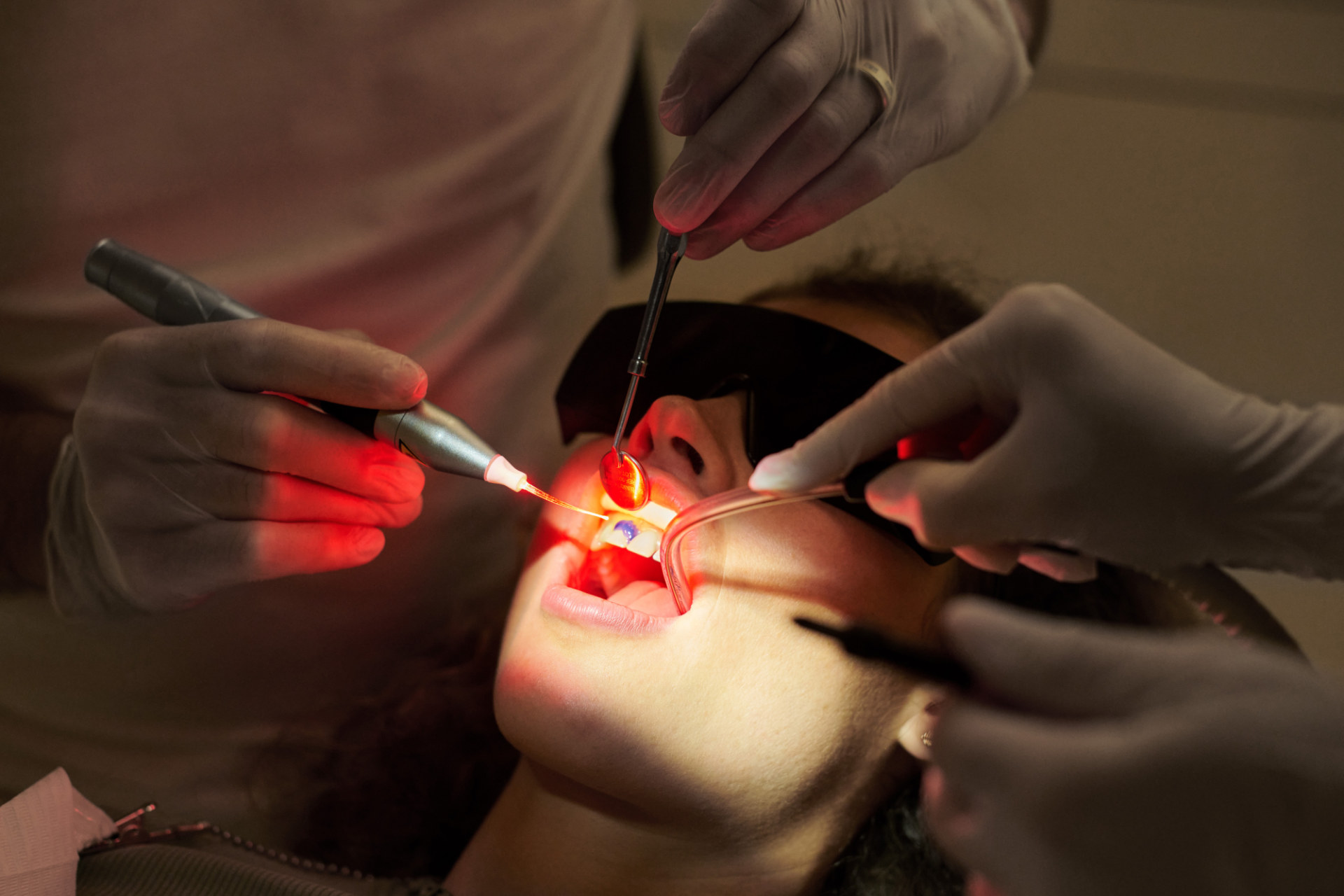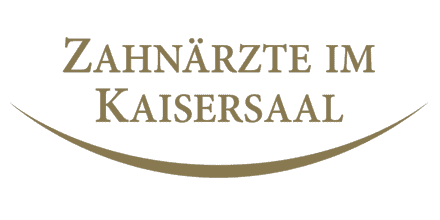Periodontal Therapy Berlin Charlottenburg
Photodynamic Therapy against Periodontitis Causing Bacteria
Periodontitis progresses in stages and can rapidly develop in the tissue surrounding the tooth and severely harm it. Therefore, the dentist must effectively remove the periodontitis bacteria to prevent it and avoid secondary diseases. At the same time, the treatment must not put additional stress on the already damaged tissue. That is why we use Photoactivated Disinfection (PAD), an innovative, minimally invasive, gentle, yet highly effective procedure. This therapy is part of our periodontal treatment.
Our 4-Phase Periodontal Therapy:
1. Pre-treatment and cleaning:
Bacteria can multiply unhindered in their bacterial biofilm, a kind of mucous layer that protects them. It adheres firmly to the surfaces of the teeth and gums. Therefore, our first step is to thoroughly clean the teeth, interdental spaces, and gums of bacterial biofilm and tartar. This measure is done during an intensive periodontal cleaning or a standard professional dental cleaning. Next, the deep recesses between the tooth and gum, the so-called gingival pockets, which have developed due to disease, are cleaned with the tissue-preserving Perio-Flow® procedure. Finally, the exposed tooth roots are polished so that the tissue surrounding the tooth can regrow on a clean surface.
2. Disinfection for Tissue Protection:
In this phase, the entire oral cavity is treated with antibacterial rinses and gels. This complete disinfection protects the healthy tissue from being damaged by the periodontitis bacteria.
3. Photoactivated Disinfection (PAD) Therapy:
This step applies tolonium chloride, a gel-like dye, to the gingival pockets. Next, the pigment is briefly irradiated with a red light laser. This combination produces active oxygen that kills bacteria resistant to the cleaning of the previous step. As a result, the inflammatory processes can be stopped, and healing can begin.
4. Aftercare and Professional Teeth Cleaning:
Follow-up appointments will guarantee the success of the treatment. Supplementary antibiotics are often unnecessary with PAD therapy but should be discussed case-by-case. As a measure against new infections, we suggest regular intensive periodontitis prophylaxis.
We invite you to experience this gentle and effective therapy against oral bacteria in our dental practice.
Note: With Photoactivated Disinfection (PAD) supplemental antibiotic use is rarely necessary.

Causes and Effects of Periodontitis
Periodontitis often progresses insidiously
Periodontitis, usually referred to as “periodontosis,” is an insidious bacterial disease that in many cases only causes pain when the tissue has already been extensively destroyed. Unfortunately, the incidence of periodontitis has increased significantly, so it is rightly considered a widespread disease.
If teeth and interdental spaces are poorly cleaned, bacterial plaque forms quickly, leading to gingivitis. There is redness and inflammation with gingivitis, and bleeding gums and bad breath can also occur.
If the inflammations do not heal, periodontitis develops. Bacteria produce enzymes that break down all the tissue surrounding the tooth during its growth. In addition, their metabolic products and toxins burden the body. Finally, the immune system reacts with inflammatory processes that further accelerate tissue loss. The result: the tooth loosens and falls out.
Periodontitis is usually the result of poor oral hygiene
Other factors facilitating periodontal disease: – Smoking – high-stress levels – long-term use of vasodilator or blood pressure-lowering medications – pre-existing conditions – poorly adjusted blood sugar levels in diabetes – hormonal changes – genetic predisposition – unbalanced diet – obesity – bacterial niches caused by misaligned teeth or protruding filling and crown margins.
The bacteria responsible for periodontitis can enter the bloodstream through the gum tissue and can affect other parts of the body. Periodontitis has been linked to respiratory diseases, arthritis, coronary heart disease, and diabetes.
Periodontitis increases the risk of:
Premature births – chronic respiratory diseases – stroke, heart attack, cardiovascular diseases – occlusions of blood vessels – diabetes – osteoporosis – rheumatic diseases – oral mucosa diseases – oral cavity cancer – inflammation of internal prostheses.
Guided Tissue Regeneration (GTR)
New tissue formation with controlled tissue regeneration
In the case of severe periodontitis, the periodontal tissues were extensively destroyed. Typical damages of the periodontium are:
- a significant regression of the gums
- deterioration of the root cementum (outer layer of the tooth root)
- progressive alveolar bone destruction
- destruction of the periodontal ligament that connects the root cementum to the jawbone
Without an intact periodontium, there is a risk that the affected teeth will fall out. We initiate guided tissue regeneration to avert this, which stimulates the tissue to form anew.
The GTR controls tissue growth
The different tissues of the periodontium do not recover at the same pace. For example, gum cells grow much faster than the cells of the tooth socket or the periodontal ligament.
GTR (Guided Tissue Regeneration) controls the differential growth of tissues by creating a barrier between them. It also prevents the gum from expanding in areas where it would interfere with the development of other tissues. We insert a membrane (barrier membrane) between the gum and the tooth root. As a result, the bone tissue and periodontal ligament can regenerate without hindrance. This membrane is made of a biomaterial and does not have to be removed afterward, as the body completely absorbs it.

